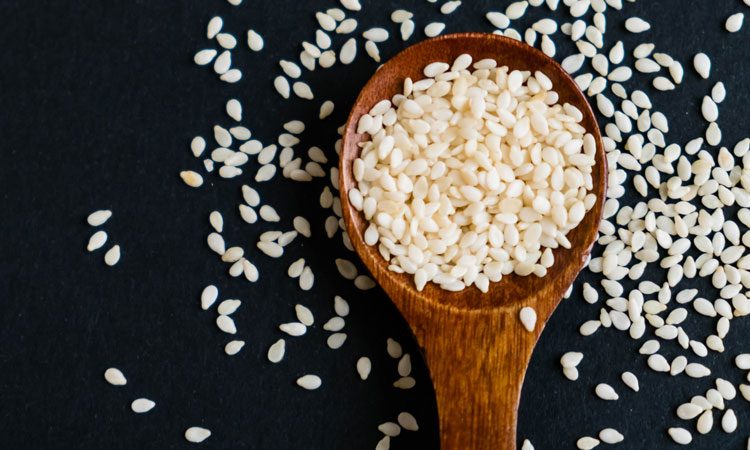17% of children with food allergies are allergic to sesame, study finds
- Like
- Digg
- Del
- Tumblr
- VKontakte
- Buffer
- Love This
- Odnoklassniki
- Meneame
- Blogger
- Amazon
- Yahoo Mail
- Gmail
- AOL
- Newsvine
- HackerNews
- Evernote
- MySpace
- Mail.ru
- Viadeo
- Line
- Comments
- Yummly
- SMS
- Viber
- Telegram
- Subscribe
- Skype
- Facebook Messenger
- Kakao
- LiveJournal
- Yammer
- Edgar
- Fintel
- Mix
- Instapaper
- Copy Link
Posted: 6 November 2019 | Rachael Harper (New Food Magazine) | No comments yet
Researchers have found out that sesame allergy occurs in an estimated 17 percent of children who have other food allergies. They also discovered that sesame antibody testing accurately predicts whether a child with a food allergy is allergic to sesame.


Sesame has joined the list of regulated allergens in the US
It has been discovered by Investigators at the National Institutes of Health (NIH) that sesame allergy occurs in an estimated 17 percent of children who have other food allergies.
The investigators also found out that sesame antibody testing (whose utility has been controversial) accurately predicts whether a child with food allergy is allergic to sesame.
“It has been a challenge for clinicians and parents to determine if a child is truly allergic to sesame,” said Anthony S Fauci, MD, director of the National Institute of Allergy and Infectious Diseases (NIAID), part of NIH. “Given how frequently sesame allergy occurs among children who are allergic to other foods, it is important to use caution to the extent possible when exposing these children to sesame.”
Standard allergy tests have been inconsistent in predicting an allergic reaction to sesame and many studies evaluating the utility of these tests for sesame allergy have included only children suspected to have a sesame allergy.
It is important to use caution to the extent possible when exposing these children to sesame…”
Scientists led by Pamela A Frischmeyer-Guerrerio, MD, PhD, deputy chief of the NIAID Laboratory of Allergic Diseases, have taken a different approach and evaluated the sesame antibody test in a group of 119 children with food allergy whose sesame-allergic status was unknown.
The researchers offered children in the study an oral food challenge (the gold standard for diagnosing food allergy) which involved ingesting gradually increasing amounts of sesame under medical supervision and seeing if an allergic reaction occurred. Children who recently had had an allergic reaction to sesame or were known to tolerate concentrated sesame in their diet were not offered an oral food challenge.
The scientists found that 15 (13 percent) of the 119 children were sesame-allergic, 73 (61 percent) were sesame-tolerant, and sesame-allergic status could not be determined for 31 (26 percent) children, mainly because they declined the oral food challenge.
Among the 88 children whose sesame-allergic status was definitive, 17 percent had sesame allergy.
The scientists measured the amount of an antibody called sesame-specific immunoglobulin E (sIgE) in the blood of these 88 children. With this data and information on the children’s sesame-allergic status, the researchers developed a mathematical model for predicting the probability that a child with food allergy is allergic to sesame.
According to the model, children with more than 29.4 kilo international units of sIgE per liter of serum have a greater than 50 percent chance of being allergic to sesame. This model will need to be validated by additional studies, however, before it can be used in clinical practice.
The research was published in Pediatric Allergy and Immunology.
Related topics
Related organisations
National Institutes of Health (NIH), NIAID Laboratory of Allergic Diseases







